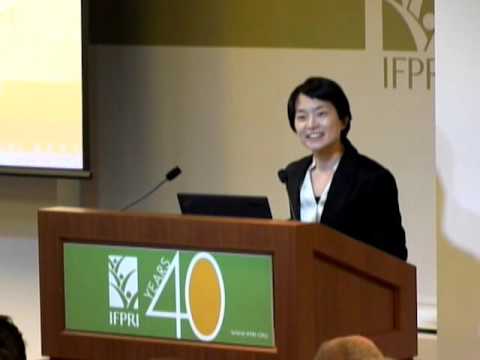An estimated 30 percent of all global lands are classified as degraded, serving as home to an estimated 3.2 billion people. Yet the scope of the problem extends further still, as the impacts of land degradation are felt in every region in the world. According to the latest research findings published in a new book on the economics of land degradation, the annual global cost of land degradation is about US$300 billion, which accounts for losses in ecosystem services and biodiversity. The study further shows that land users will get five dollars in returns for every dollar they invest in restoring degraded lands. Despite this, investments in restoration of degraded lands remain alarmingly low, particularly in low income countries.
With both the stakes and potential payoff so high, why is there so little action and investment toward addressing the problem?
Joachim von Braun, current Director of the Center for Development Research (ZEF) based at the University of Bonn and former Director General at IFPRI, asserts that getting policymakers to pay attention to the scope of the problem is key. Addressing the audience via video message at a recent policy seminar, von Braun said, “Senior policymakers do not react to tons of soil blown away or washed away or hectares degraded, they will react to dollars and cents.”
Ephraim Nkonya, Senior Research Fellow at IFPRI and lead author of the book Economics of land degradation and improvement: A global assessment for sustainable development, has made it his mission to put a price tag on land degradation in hopes of capturing the attention of policymakers. The work presented by Nkonya and his colleagues represents more than four years of intense research on this topic as well as the development and deployment of a new model aimed at capturing the full scope of both direct and indirect costs associated with land degradation.
According to Nkonya, one of the key elements in this work relies on reframing what constitutes land degradation, noting that in the past soil erosion was synonymous with land degradation. “We are defining land degradation according to the Millennium Ecosystem Assessment, which says that it’s a long-term loss in ecosystem services.” These include managing soil nutrients and water quality as well as preserving biodiversity and capturing and storing carbon in the soil. Nkonya argues that once we start accounting for ecosystem services and expanding our scope to include other biomes such as forests and grasslands, we find that land degradation negatively impacts every region of the world and affects high-, middle-, and low-income countries alike.
This, of course, brings us back to the hefty price tag: $300 billion per year in losses as a result of land degradation.
Yet perhaps just as significant as the total is the breakdown of this cost by user. For example, Nkonya and his coauthors found that less than half of the costs associated with degraded lands are felt directly by land managers, such as farmers and pastoralists. In other words, the global community bears most of the economic burden for degraded lands, mainly due to a loss in ecosystem services. Alisher Mirzabaev, a senior researcher at ZEF and coauthor of the volume on land degradation, believes that the global community must invest more energy and resources into policies and institutions that support land managers (such as improving market access and securing land tenure for smallholder farmers) and, in some cases, directly incentivize them to manage their lands more sustainably by, for example, paying for ecosystem services. Not coincidentally, he added, “more than half of the benefits [of restoring degraded lands] are global public goods in the form of ecosystem services, which everyone enjoys.”
The authors’ breakdown of cost of action versus cost of inaction also raises eyebrows and, hopefully, captures the attention of policymakers at the national and global level. Nkonya revealed that “we found that the cost of action is 5 trillion US dollars over that 30 year period. But, if we don’t take action over that same 30 year period, we are going to suffer a loss of about 25 to 26 trillion US dollars. That’s a very big cost.”
And who will bear such an enormous cost? Nkonya’s answer: everyone. Although land degradation-induced processes such as the loss of soil fertility and productivity act on local scales, addressing the problem carries regional and even global implications. “All people on earth will benefit from the restoration of degraded land, so all of us should take action, all of us should be involved in this,” he concluded.







